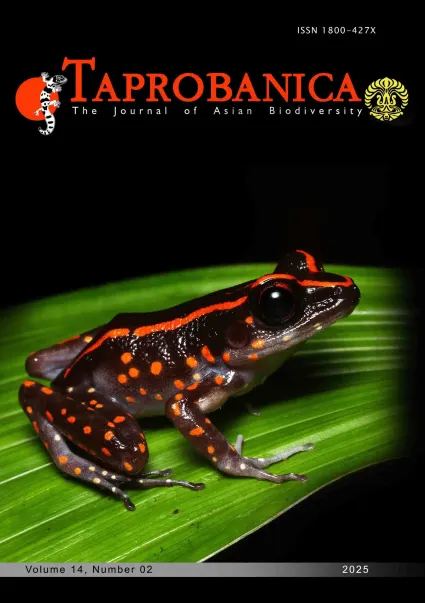

v14i2.389
Volume 14 | Number 2 | November 2025
Short Note
eISSN: 1800-427X (online)
DOI:10.47605/tapro.v14i2.389
Submitted date: 25 November 2024
Accepted date: 5 June 2025
Published date: 28 November 2025
Pp. 323–324.
On the partial TLR21 gene from the feathers of birds, a chicken, and a duck
S.H. Sumarsono*, R.R.B. Suryohastari, E.A. Giri-Rachman, S.A.R. Nisa
*Corresponding author. E-mail: sonyheru@sith.itb.ac.id
The evolutionary arms race between pathogens and host organisms has shaped diverse immune detection systems across species. Among the most studied innate immune components are Toll-like receptors (TLRs), which bridge environmental signals with host immune responses. Originally discovered in Drosophila melanogaster as a regulator of embryonic development, the Toll gene was later found to have antifungal immunity functions. This laid the foundation for the discovery of vertebrate TLRs, including those in birds. TLRs recognize structurally conserved molecules of microbes, known as pathogen-associated molecular patterns (PAMPs), encompassing lipids, lipoproteins, proteins, and nucleic acids.
Section Editor: Yufang Liu
DOI:10.47605/tapro.v14i2.389
Submitted date: 25 November 2024
Accepted date: 5 June 2025
Published date: 28 November 2025
Pp. 323–324.
On the partial TLR21 gene from the feathers of birds, a chicken, and a duck
S.H. Sumarsono*, R.R.B. Suryohastari, E.A. Giri-Rachman, S.A.R. Nisa
*Corresponding author. E-mail: sonyheru@sith.itb.ac.id
The evolutionary arms race between pathogens and host organisms has shaped diverse immune detection systems across species. Among the most studied innate immune components are Toll-like receptors (TLRs), which bridge environmental signals with host immune responses. Originally discovered in Drosophila melanogaster as a regulator of embryonic development, the Toll gene was later found to have antifungal immunity functions. This laid the foundation for the discovery of vertebrate TLRs, including those in birds. TLRs recognize structurally conserved molecules of microbes, known as pathogen-associated molecular patterns (PAMPs), encompassing lipids, lipoproteins, proteins, and nucleic acids.
Section Editor: Yufang Liu
- List of Articles & Contents





